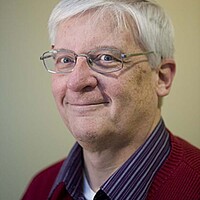Matt Severson funds students in need one by one
Loading...
After graduating from high school in Palo Alto, Calif., in 2007, Matt Severson accompanied his mother on a safari to Tanzania in East Africa.
Outside his hotel room one day he spotted a boy tending a cow. Striking up a conversation he learned that the boy, John Medo, had just graduated from primary school. His goal, the boy told him, was to become president of Tanzania someday.
But Mr. Severson also learned that, as the middle of five children, young John would not be able to continue his education: His family couldn't afford the secondary (high school) school student fee. Such fees, which range from $100 to $300 a year in many African countries, pose a huge barrier to school attendance for children in countries where the average wage may be $2 or less per day.
"Here was this kid who just happened to be born in another part of the world, who had the same dreams as any young person here in the US would have," Severson recalls. "But by circumstance he was not going to be able to fulfill his dreams."
Severson paid the boy's school fee himself. And he didn't stop there.
In 2010, while a student at Brown University in Providence, R.I., Severson joined with a friend and his father, Dennis, to design a website that would allow others to provide financial assistance to worthy students. Severson became founder and president of The School Fund.
On the site potential donors can read about students around the world and "find a student whose story you really relate to, and through our website fund their education," he says. Gifts can be as modest as just a few dollars or as generous as the donor wishes.
So far, The School Fund has helped more than 860 young people continue their education, some 500 within the last year alone. The effort is growing by 50 percent each year so the goal for the coming year is to fund 750 students, Severson says.
The "crowdsourcing" of charitable activities online has become hugely popular, including sites such as Kiva, which makes microloans to small business owners, and Donors Choose, where visitors can respond to requests from teachers to supply classroom needs. Kiva and Donors Choose "have stirred up the pot and gotten this huge new audience engaged with these issues," Severson says. "Everyday people [are getting involved].… I think it just builds a more caring, more connected, more sympathetic global community, and I think that's really important and really valuable."
Student profiles at The School Fund contain three things Severson believes are important to donors: transparency, communication, and documentation. Donors learn about the specific student they will be helping; if they wish, they can communicate directly with the student via the website; and they are shown documentation that backs up how their donation has been used, including, where possible collecting receipts. One hundred percent of donations go directly to the students.
The problem The School Fund is addressing is a huge one: In 2010, 71 million youths (generally aged 12-15 years) were not in school around the world, according to the 2012 United Nations Millennium Development Goals Report.
Severson acknowledges that helping a few hundred is a modest start. But for him it's all about those one-to-one contacts between donors and students. "If we had just helped one student, I would have considered us to have a positive impact," he says.
Today Severson works in a high-powered job on the new business development team at Google.
"I've done some exciting work on the self-driving car, [and I'm] working a little bit on Project Loon," which is exploring the use of a network of high-altitude balloons to connect people in rural and remote areas to the Internet, he says.
He enjoys balancing his challenging career with the rewards of running The School Fund. But now that the nonprofit fund has grown larger he has brought on a CEO to run it. Drika Weller has years of experience working with children in need at the United States Agency for International Development, the US government agency that delivers civilian foreign aid. "She's doing a fantastic job," he says.
The School Fund has also gotten a big lift lately from Jack and Finn Harries, two 21-year-old brothers who run the youth-oriented Jack's Gap YouTube channel with 3.5 million subscribers around the world. The brothers have published an extensive blog post on the fund and plan to add a video soon.
They join President Bill Clinton's Clinton Global Initiative and entrepreneur Kathy Ireland among those endorsing the fund.
Severson has words of encouragement for others who want to start a charity.
"I tell people I've learned more through growing The School Fund than I have from any other single thing in my life," he says. "It's an incredibly educational and rewarding thing for me personally."







